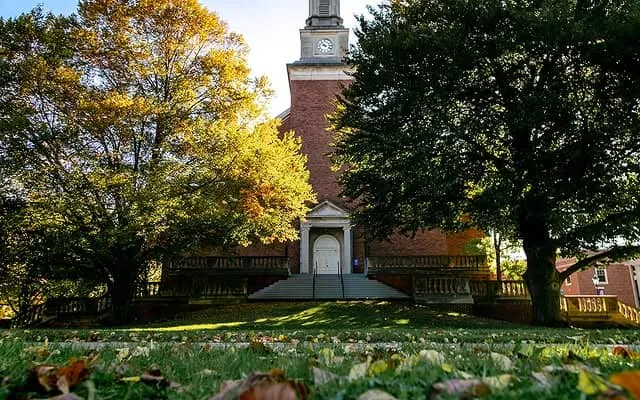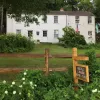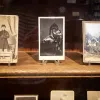
The Bible Lands Museum's exhibits offer glimpses into life from prehistoric times into the Middle Ages. Artifacts include many forms of pottery; objects made of stone, bone, alabaster, faience, glass, and metal; and rare examples of ancient basketry, leather, and textiles. The Museum's permanent exhibit, Tells and Tombs, uses artifacts, models, excavation photographs, and drawings to help visitors think about how objects were made and used in ancient times and how surviving materials are recovered by archaeologists today.
The exhibit displays artifacts in archaeological and historical context and provides an opportunity to explore changes in form and function over 4,000 years. A temporary exhibit, Words Made Visible, traces the origins of writing and the alphabet in the ancient Near East through inscribed artifacts and large-scale replicas of inscriptions. Richly illustrated interpretive panels explain how cuneiform, hieroglyphs, and the alphabet work and examine the uses of writing in Mesopotamia, Egypt, Canaan, Israel, Greece, Rome, and the early Islamic world.
Archaeology at Pittsburgh Theological Seminary goes back to 1908, when the Reverend M. G. Kyle became lecturer in Biblical archaeology--the first at a Protestant seminary. During the 20th century, the work expanded to include excavation, publication, a museum, and public programming. Professor Kyle was followed in archaeological work for PTS by James L. Kelso (1930-1963), Paul Lapp (1968-1970), Nancy Lapp (1970-2000), and Ron Tappy (1997- present).
Excavations sponsored by PTS at four sites form the core of a collection that spans thousands of years: BAB EDH DHRA on the eastern side of the Dead Sea, the site of an Early Bronze Age city and cemeteries TELL BEIT MIRSIM in the southwestern foothills, a succession of cities of the Bronze and Iron Ages. BETHEL is on the border of ancient Israel and Judah, a site inhabited from Chalcolithic times through Roman times. TULUL EL ALAYIQ near Jericho is a palace complex built in Hellenistic times and later renovated by Herod the Great. These efforts contributed to a growing understanding of the Bible's world, bringing thousands of artifacts to the Seminary for Study. The Seminary's commitment to archaeology continues with the work of Professor Ron Tappy, who is currently excavating at Tel Zayit (Arabic Zeitah) in the Shephelah, or "foothills," an hour southwest of Jerusalem.








